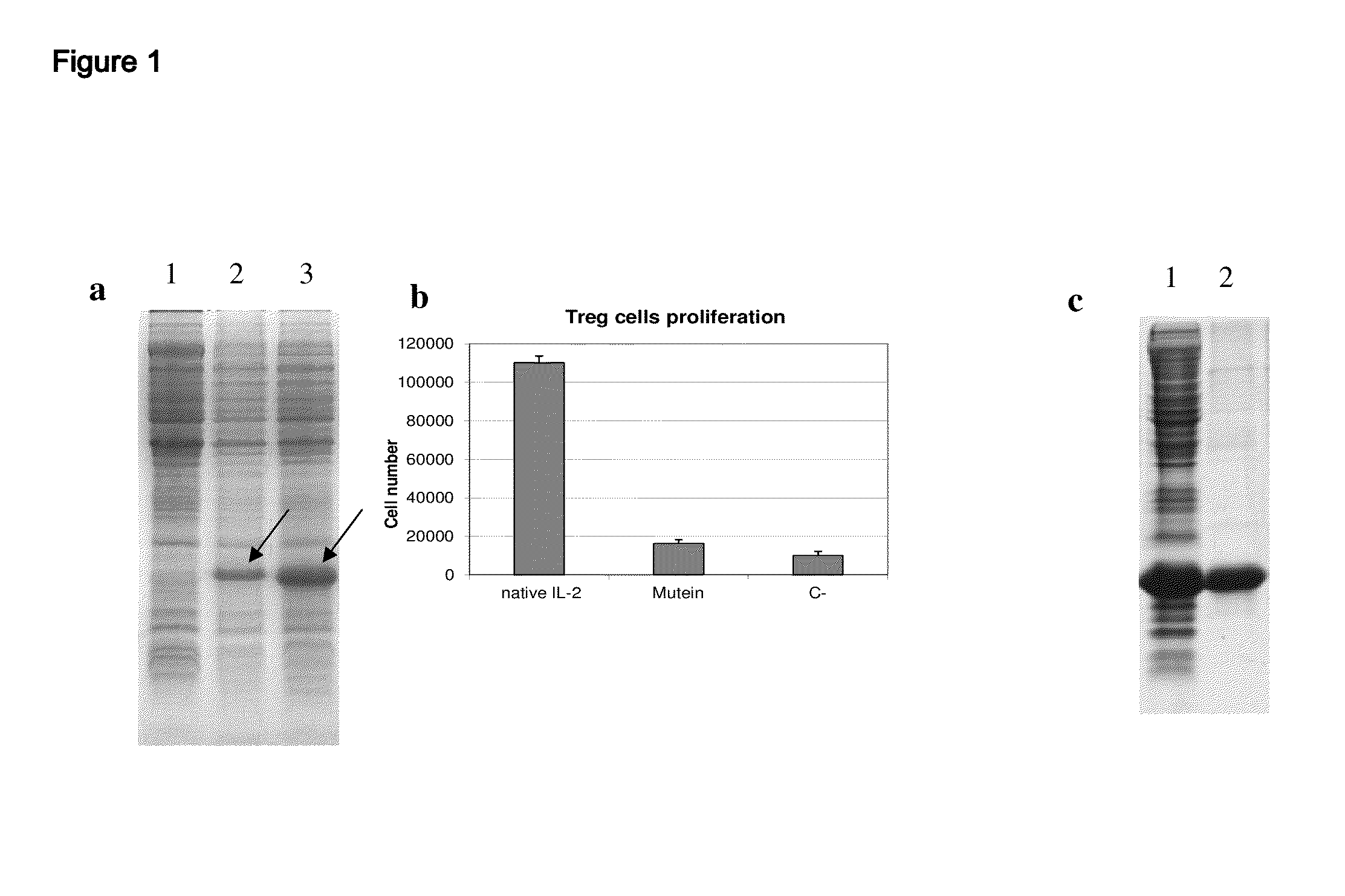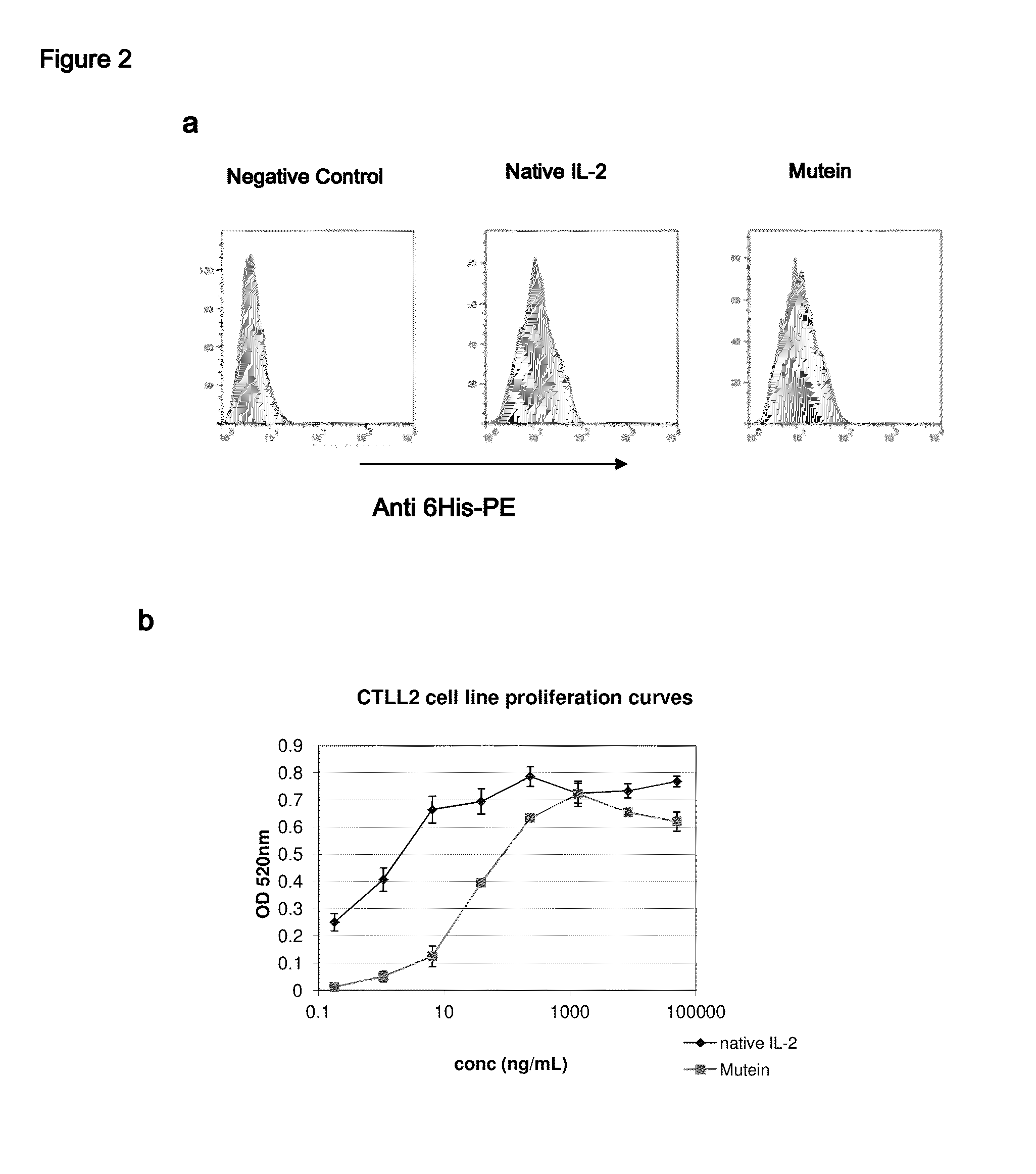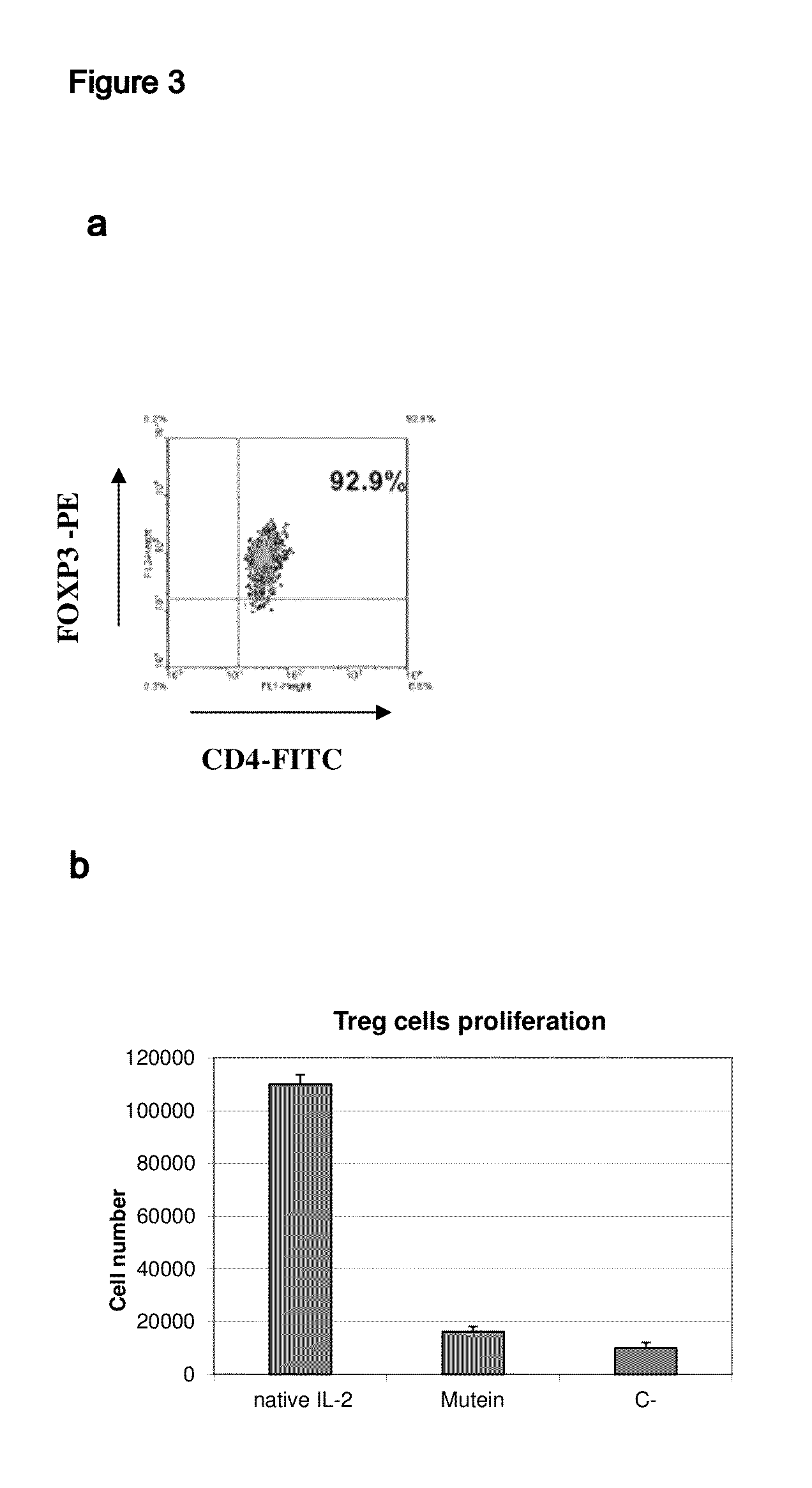Il-2 derivatives polypeptides with agonist activity for therapy of cancer and chronic infections
a technology of il-2 and derivatives, which is applied in the direction of antibody medical ingredients, fusions for specific cell targeting, immunological disorders, etc., can solve the problems of toxic effects and low efficacy of direct use of il-2 in patients, and achieve the effects of improving its folding, increasing its pharmacological activity, and increasing the lifetime in blood
- Summary
- Abstract
- Description
- Claims
- Application Information
AI Technical Summary
Benefits of technology
Problems solved by technology
Method used
Image
Examples
example 1
Design of the IL-2 Muteins
[0034]The muteins were designed computationally, from bioinformatics techniques, using as basis the reported structure of human IL-2 in database PDB (Protein Data Bank) and the amino acid sequences of IL-2 in various species that are available in Swissprot database. Several muteins were designed including 3 to 6 mutations (introducing non-conservative amino acid substitutions) in solvent-exposed and highly conserved residues. These muteins were expressed in E.coli from a plasmid construction in pET28a vector including a target sequence of 6 histidines at the amino terminal. The muteins were purified by reverse phase (FIG. 1) and a high purity (>95%) was obtained. The muteins obtained were selected from their properties in experimental assays both in vitro and in vivo, to show the 3 basic properties described in the body of this invention. Out of all the muteins constructed Table 1 describes a set of specific mutations that have the desired property of being...
example 2
Demonstration of the Agonist Nature of the IL-2 Muteins Designed
[0035]FIG. 2 illustrates how the muteins mentioned in Table 1 bind to the components of the IL-2 receptor on the surface of CTLL2 cell line (FIG. 2a). The constructed muteins bind to the CTLL2 cells, which are known to have on their surface both high affinity and intermediate affinity receptors for IL-2. The binding detected in our assays appears to be similar to that obtained with native IL-2. FIG. 2b illustrates the capacity of the muteins shown in Table 1 to stimulate the growth of CTLL2 cell line (FIG. 2b). These muteins behave as partial agonists of the activity of IL-2 in this assay. Their specific activity is between 5 and 50 times lower than that of native IL-2.
example 3
Effect of IL-2 Muteins on Regulatory T Cells
[0036]The muteins described in Table 1 show a very low capacity to stimulate regulatory T cells in vitro (FIG. 3). As shown in this figure, while the native IL-2 is able to induce strong proliferation of regulatory T cells (T CD4+CD25+FoxP3+) stimulated with plate-bound anti-CD3 antibody. The muteins described in Table 1 in mass concentrations significantly higher than that of the native IL-2 did not stimulate the regulatory T cells. It must be added that the results described above are valid even if the amount of mutein to use is increased so as to use an amount equivalent in activity to the native IL-2 in the proliferation assay with CTLL2 line. The muteins described in Table 1 typically exhibit a capacity to stimulate regulatory T cells at least 1000 times lower than that of native IL-2
PUM
| Property | Measurement | Unit |
|---|---|---|
| Composition | aaaaa | aaaaa |
| Therapeutic | aaaaa | aaaaa |
| Affinity | aaaaa | aaaaa |
Abstract
Description
Claims
Application Information
 Login to View More
Login to View More - R&D
- Intellectual Property
- Life Sciences
- Materials
- Tech Scout
- Unparalleled Data Quality
- Higher Quality Content
- 60% Fewer Hallucinations
Browse by: Latest US Patents, China's latest patents, Technical Efficacy Thesaurus, Application Domain, Technology Topic, Popular Technical Reports.
© 2025 PatSnap. All rights reserved.Legal|Privacy policy|Modern Slavery Act Transparency Statement|Sitemap|About US| Contact US: help@patsnap.com



